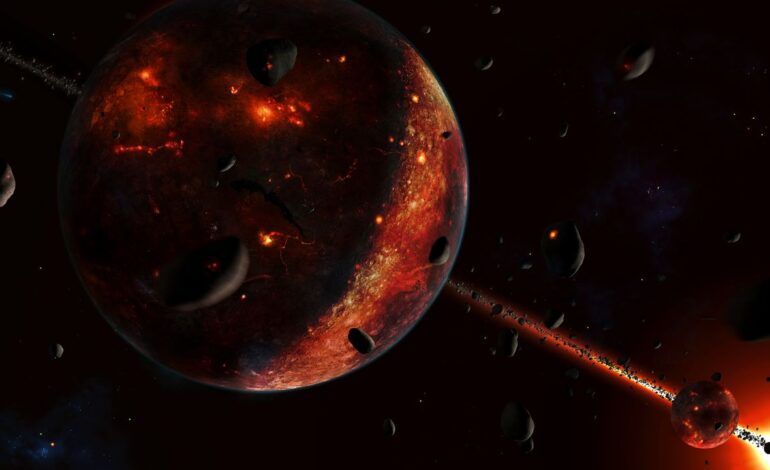Scientists Uncover Evidence of Earth’s Ancient Proto-Material

Scientists have identified what may be the first direct evidence of material from the “proto-Earth,” a primordial version of our planet that existed approximately 4.5 billion years ago. This groundbreaking study, published on October 14, 2023, in the journal Nature Geoscience, reveals that tiny chemical clues of this early Earth have survived deep within our planet’s rocks, largely unaltered over billions of years. The findings offer a rare glimpse into the planet’s original building blocks and could shed light on the characteristics of Earth and its neighboring worlds during their formative years.
The research team, led by Nicole Nie, an assistant professor of Earth and planetary sciences at the Massachusetts Institute of Technology (MIT), argues that this evidence is significant. “This is maybe the first direct evidence that we’ve preserved the proto-Earth materials,” Nie stated. The study suggests that remnants of the proto-Earth have persisted despite the tumultuous events of the early solar system.
About 4.5 billion years ago, the young solar system consisted of a swirling cloud of gas and dust, which gave rise to the first asteroids and planets, including a hot, molten Earth. Less than 100 million years later, a Mars-sized asteroid collided with the proto-Earth in a catastrophic event that melted and remixed nearly the entire planet, ultimately leading to the formation of the Moon. This “giant impact” is believed to have erased most chemical traces of the preceding proto-Earth.
Nie and her colleagues discovered a subtle imbalance in potassium isotopes in ancient rock samples, specifically a deficit of potassium-40. This anomaly could serve as a potential fingerprint indicating material that survived the giant impact. “We see a piece of the very ancient Earth, even before the giant impact,” Nie explained. “This is amazing because we would expect this very early signature to be slowly erased through Earth’s evolution.”
Potassium exists in three isotopes: potassium-39, potassium-40, and potassium-41, each differing slightly in the number of neutrons. In 2023, Nie’s team analyzed meteorites from various locations across the solar system and found distinct potassium isotopic differences, which they suggested could help trace Earth’s building blocks.
In their latest study, they focused on ancient rock samples from diverse locations, including Greenland, the Abitibi belt in Canada, and Hawaii’s volcanoes. The researchers aimed to find similar potassium anomalies in these rocks, hypothesizing that if this potassium signature is preserved, it could reveal insights into Earth’s early history.
The analysis of these ancient materials indicated an even lower presence of potassium-40 than anticipated, leading Nie to conclude that the rocks “were built different.” To detect such a minute signal, the team dissolved the powdered rocks in acid, isolated the potassium, and employed an ultra-sensitive mass spectrometer to measure the isotopic ratios accurately.
Additionally, the researchers conducted computer simulations to explore whether known geological or cosmic processes could account for the observed potassium isotope ratios. These simulations indicated that scenarios involving asteroid impacts or large-scale planetary melting would likely result in slightly higher potassium-40 levels than those found in the actual rock samples. The deficit observed represents the primitive proto-Earth mantle that largely escaped mixing from the giant impact, suggesting it still exists deep within Earth today.
While earlier studies of meteorites indicated potassium anomalies, they did not display the same exact deficit, implying that the materials forming the proto-Earth remain undiscovered. “Scientists have been trying to understand Earth’s original chemical composition by combining the compositions of different groups of meteorites,” Nie noted. “But our study shows that the current meteorite inventory is not complete, and there is much more to learn about where our planet came from.”
This research not only enhances our understanding of Earth’s history but also opens up new avenues for exploring the origins of terrestrial planets within our solar system and beyond.






